The Magic of Soft Hackles
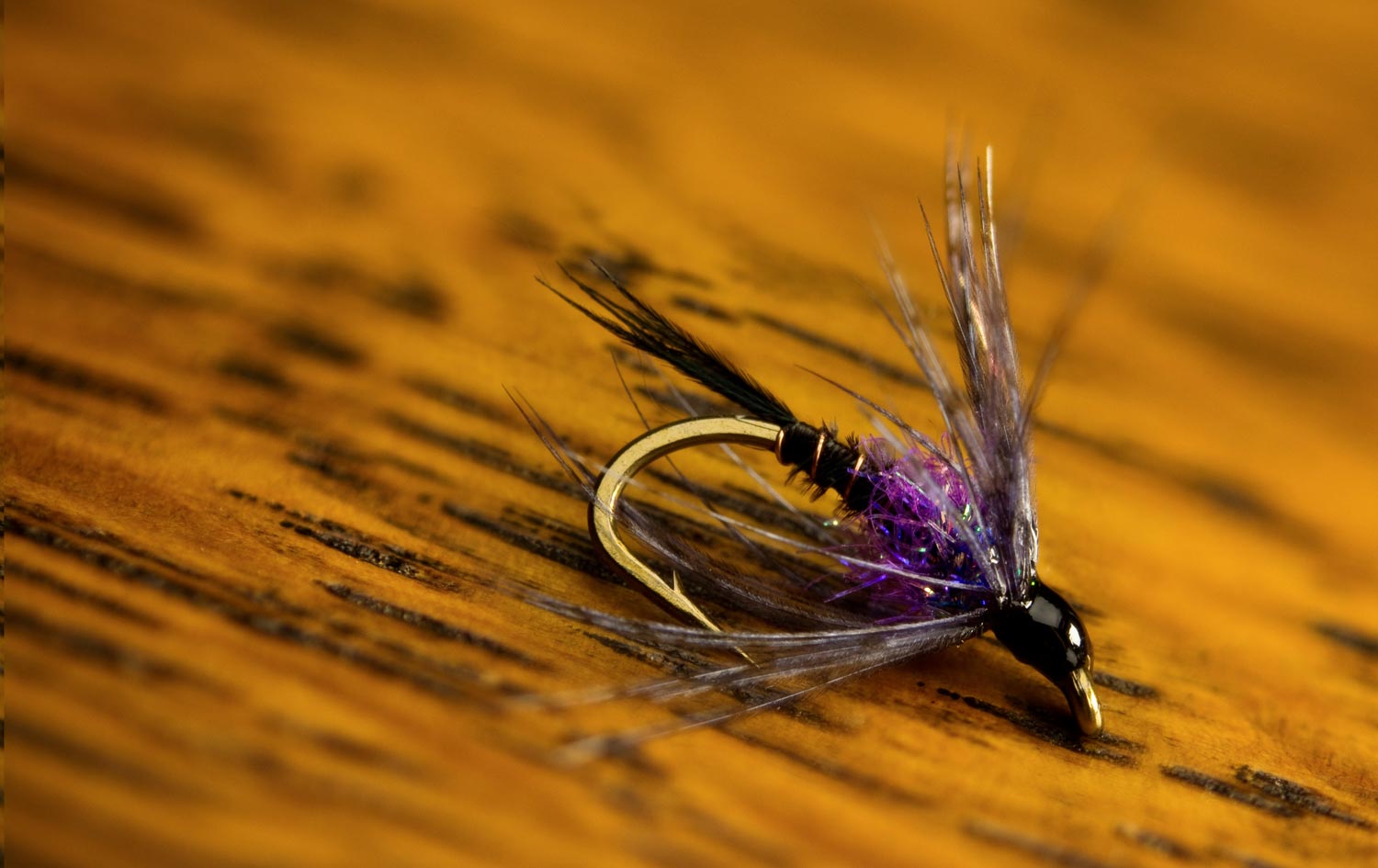
SOFT HACKLES ARE THE SHARKS OF THE FLY BOX.
Like the shark, the soft hackle is one of the oldest of its ilk, and like those ancient predators, it has evolved very little from its inception. Like the shark, it is a deadly design that could not be improved upon. Take, for example, the Kebari flies used by tenkara anglers for hundreds of years. Basically Soft Hackles with a reverse hackle. So effective, that traditional tenkara anglers only fish one pattern. Many modern fly anglers overlook traditional Soft Hackle patterns that are as effective today as ever.
There are two primary reasons for the effectiveness of the soft hackle. For starters, it’s the ultimate impressionistic pattern. It looks like almost everything on the aquatic menu. A fish who is looking for something specific is very likely to see it in a soft hackle. The second reason is, there’s just no wrong way to fish one. If you struggle with getting a drag free drift, a soft hackle is a very forgiving pattern. As long as it is in the water, it will produce fish.
FISHING SOFT HACKLES
As I said, there is no wrong way to fish these flies, but there are some proven tactics you can employ. For starters, dead drifting the fly as a nymph is never a bad plan. The Soft Hackle is as effective in this role as any pattern. That said, the dead drift does not take advantage of some of the pattern’s unique properties.
Perhaps the most common and most productive presentation for a Soft Hackle is the swing. The hackle has a tendency to trap an air bubble making the fly a natural emerger pattern. There are tying techniques, which I will go into, that enhance this effect. When fished deep and swung to the surface, the glowing air bubble inside the hackle is more than any trout can resist. One of my favorite ways to rig this pattern is to drop it about sixteen inches behind a Wooly Bugger with some weight in front of the Bugger. Drift the team deep through a run then lift them to the surface or quarter them down and across and let then swing and hold on.
When fishing from a boat, it’s very effective to cast a Soft Hackle straight across the current and retrieve it slowly, about four inches at strip. A hand-twist retrieve works well. This is also effective when teamed with a Bugger. Even more fun,
Read More »Fly Fishing in Gloves Gets Better with Time

DO YOU EVER FLY FISH IN GLOVES?
If you answered no, don’t make the mistake of thinking just because you tried fly fishing in gloves a couple times and couldn’t stand them, that you’ll always feel that way. Believe me, I been there, I used to be one of the haters myself. I’d rather have my fingers ice cold all day long than try to fly fish in gloves and feel awkward, clumsy and terrified I’m going to lose the fish of a lifetime. These things kept me from learning to fly fish comfortably in gloves for a very long time. It wasn’t until the last couple years that I’ve finally become comfortable fly fishing in gloves. In fact, it was my first steelhead trip to New York
Read More »When Rigging For Bonefish On The Fly, Less Can Be More
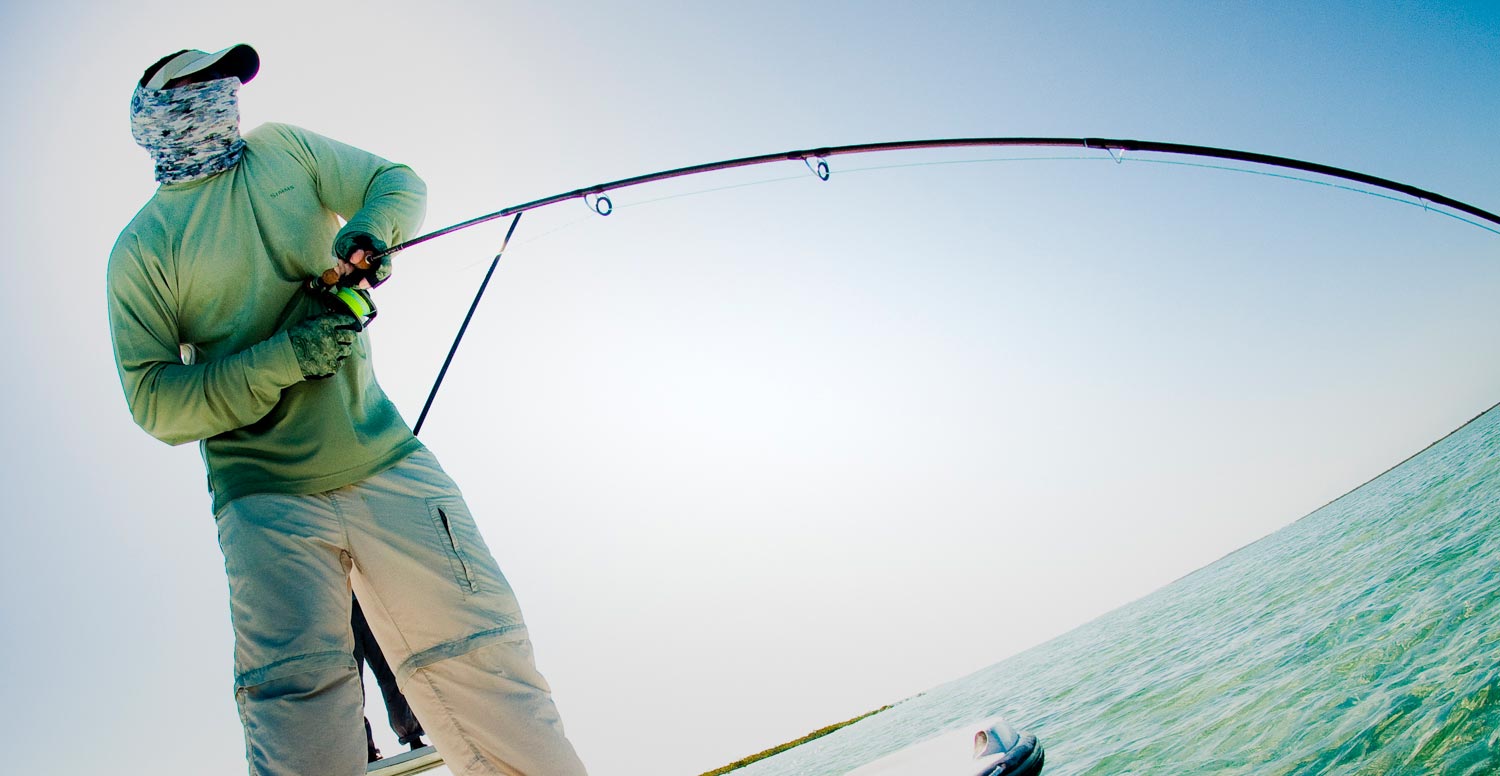
WHAT’S ALL THAT LINE REALLY DOING FOR YOU?
I got the chance recently to fish with my buddy Kristen Mustad from Nautilus Reels. I’m not sure Kristen ever fishes the same reel twice. And can you blame him? There’s always a new prototype to test and it is his job to never be satisfied with a reel. When Kristen lined up his new CCFX2 I noticed him doing something odd. He cut off about thirty feel of the back end of a brand new fly line. I had to ask way, and the answer made me rethink how I rig for bonefish.
“How often do you make a hundred and twenty foot cast?” Kristen asked me. “So the rest of the time, what’s that line doing? It’s creating drag in water when the fish cuts.” He makes a brisk gesture to the right with his hand to illustrate his point.
Bonefish are notorious for that. They will make a blistering run, putting you deep into your backing then make a ninety-degree turn. That’s often when they break off or straighten the hook. As they run at thirty-five mph, at ninety degrees to your line, all of that line is ripped through the water and the resulting pressure is far greater than the drag of your reel. It’s happened to me and it’s a bad feeling.
The pressure which the line puts on the fish is directly related to the diameter of the line. The thicker the line, the more pressure it puts on the fish and the greater the risk you will lose him. Fly line creates more drag than backing and that’s why Kristen cuts off the part of the line he’s not casting. Less fly line, less drag.
He takes it a step further though. Instead of using
Read More »Two Anglers Are Often Better Than One
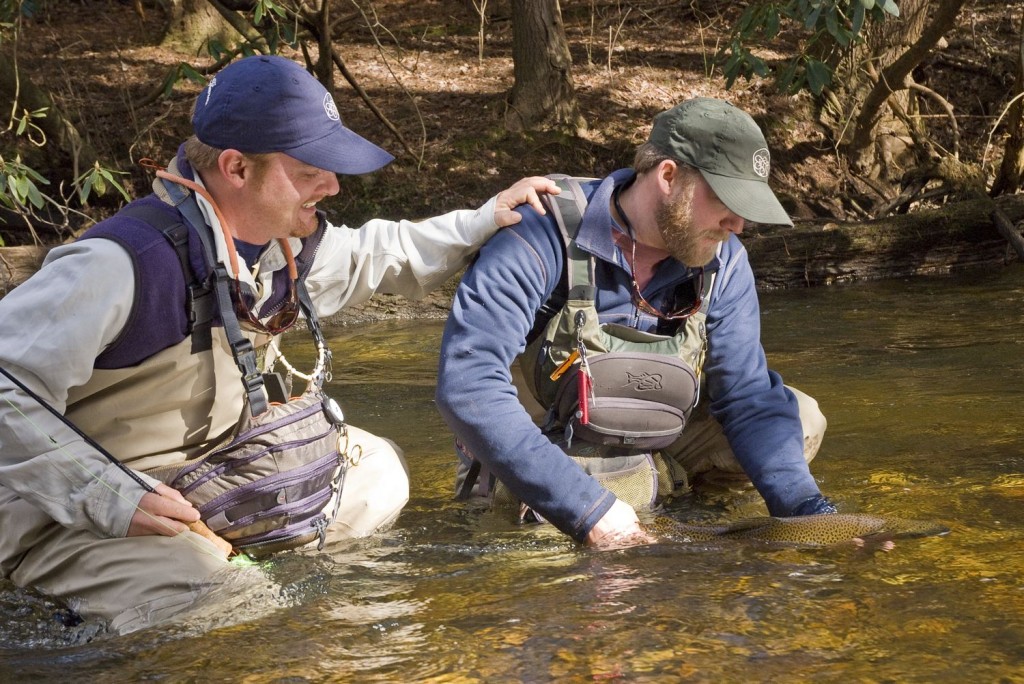
You can’t enjoy camaraderie on the water by yourself.
There’s no high-fives, no passing the victory flask around, and worst of all, it’s awfully hard to snap a quality photograph of you and a prized catch. Wait a minute, I take the latter back. It is possible to get a good photo by yourself if you’ve figured out a way to strap a tri-pod to your back and you’re also willing to lug it around all day. That being said, the main reason I think two anglers are often better than one, is because it allows you to work as a team, and that generally makes it much easier to find success on the water.
Louis and I have had pretty consistent success fishing together over the years. Even during really tough fishing conditions we generally find a way to put enough fish in the net during the day to call it a win. The biggest reason for this is because we’re always working together to decipher the fish code. Fishing as a team, we figure out what the fish are feeding on, where they’re primarily located, and what are the hot fly patterns. We make a point to never tie on the same patterns first thing in the morning, and quite often,
Read More »I’ll Have The Fish
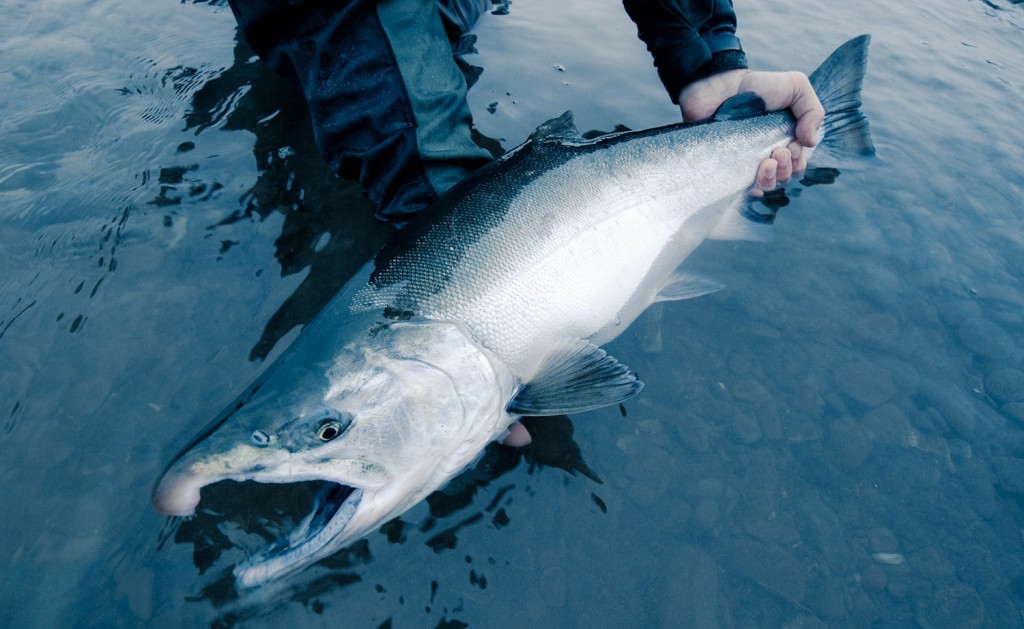
Is Aquiculture Wrong?
I got into a discussion with a friend the other day that put a burr under my saddle. We were talking about what fish is OK to eat and what isn’t. Not in the way that I refuse to eat a catfish from the Chattahoochee but rather how no one should be eating wild steelhead. My friend, who is not a fisherman, asked “what about farm raised fish?” Without thinking about it I said, “sure, that’s fine”. He then went on to explain that he did not eat farm raised fish because it was cruel to take a fish that was meant to be free and confine it in a pen. ( I’m not going to dwell on this idea for too long for reasons that I think are obvious. If that’s the story you want to hear, click here! ) I am unashamedly opposed to the idea of causing unnecessary pain and suffering to any living thing but I also understand what these teeth were put in my head for. I could write a couple of thousand words on this but instead I’ll leave it at this. I remember standing on a gravel bar in Alaska watching a salmon struggling in the current. The fish’s tail was missing along with the last eight inches of him. Two trout were following taking turns eating him while he was still alive. My point being, if we are going to get into the business of attaching human emotions like happiness to fish, let’s be sure we’re choosing the correct emotions. Nobody cares about fish more than me, but that’s their nature. If you hold still long enough, they’ll eat you. I’m really not sure what happiness is to a fish but most of them will choose to stay in one spot if there is plenty of food so I’m not worried about the pen.
Still, this got me thinking. Did I give the right answer? Is fish farming OK? With recent outbreaks of Infectious Salmon Anemia in the Pacific Northwest spreading from fish farms and threatening wild Pacific salmon I had to wonder. Hundreds of thousands of farm raised fish escape into the ocean spreading, not only disease, but their scientifically altered genes, wreaking god knows what kind of havoc on wild populations. Sometimes these escapees are non-native species that out compete native fish. In fact, these fish don’t even need to escape to do their damage. With massive fish farms at the mouthes of some of the world’s best steelhead and salmon rivers wild salmon, steelhead and smelt must run a gauntlet of disease every year to spawn. And what of the impact of all those penned up fish on the ecosystem? It’s clearly a mess but what’s the answer?
The world’s rapidly expanding demand for seafood is greater than the oceans can sustain. Popular species like tuna are under immense pressure. Fish size and numbers are way down in the open ocean. Clearly we can’t all eat wild fish. I spoke to
Read More »The Economy of Wraps in Fly Tying
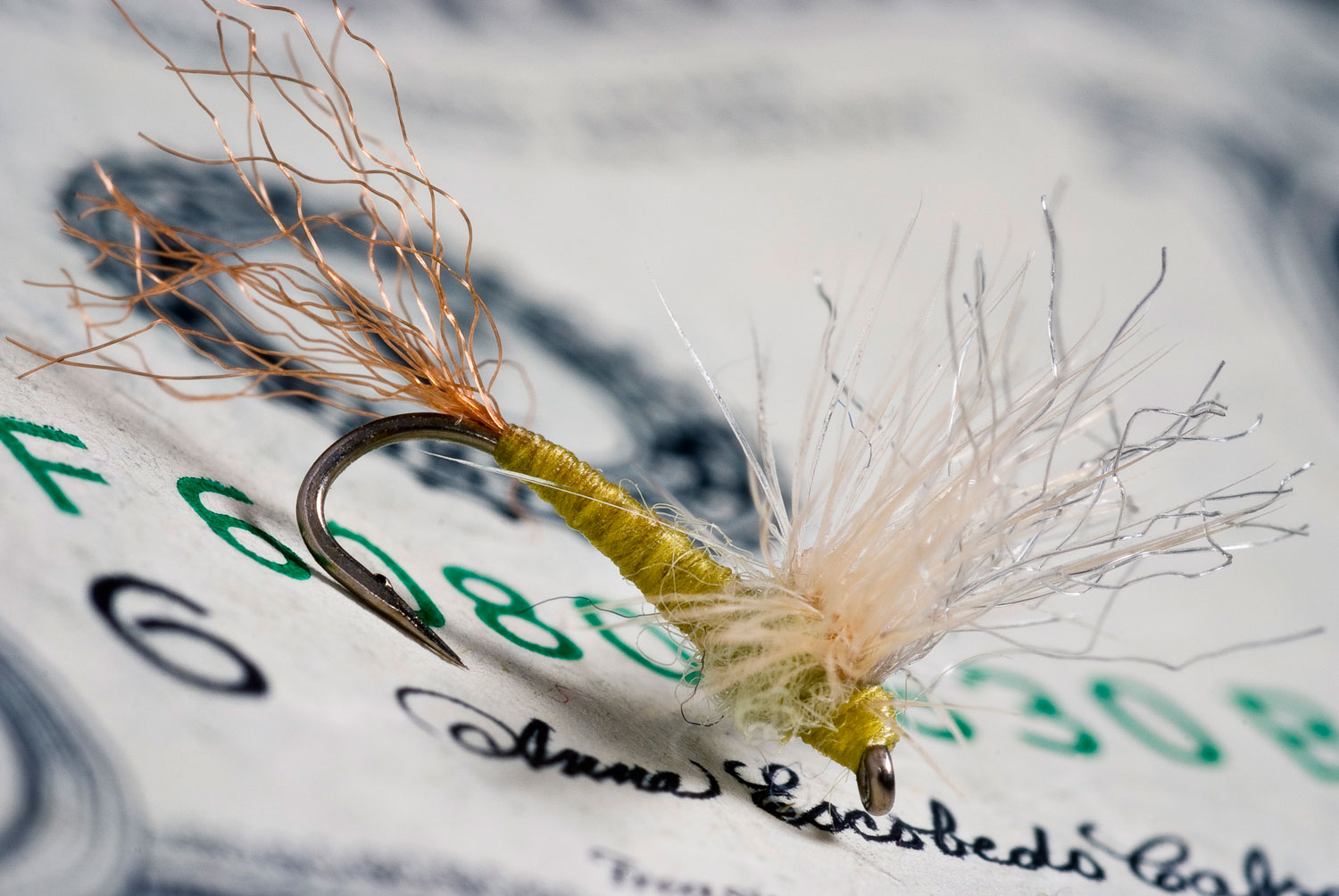
THE HALLMARK OF WELL-TIED FLIES IS NATURAL PROPORTION.
This is never more true than when tying tiny trout flies. Trout are visual feeders and there are three primary criteria that a fly must meet to elicit a positive response. It must match the natural in size, color and profile. Of these three, the hardest to match in tiny flies is profile.
There are several elements to a fly’s profile. It must have the appropriate style of wing and the right size hackle, for example, but where most of us miss the mark is in the proportion of the body. Primarily because most tiers, often including myself, use too many wraps of thread.
Using too much thread builds bodies that are too thick and often lumpy and awkward. It always matters but when tying patterns smaller than size 16 every wrap is critical. Using too many wraps to secure a material will cause awkward lumps in the tiny profile which make the fly look unnatural. That can cost you a discerning fish.
HERE ARE SOME TECHNIQUES THAT WILL HELP YOU TIE MORE NATURAL FLIES BY SPARING THE THREAD.
Make a plan
It’s easy to become task oriented when tying. When you focus only on the material you are tying in, you end up doing repetitive tasks. Plan ahead. Think of the fly as a whole and take a minute to think it through before you tie. You can often catch in several materials with a single wrap each, then secure them together as you wrap up the hook shank.
Catch materials in early
Materials like ribbing wire can be caught in as you first wrap your thread down the hook shank. This conserves an entire layer of thread. There’s no need for a thread base to tie the wire into, because once it’s wrapped around the body, it can not be put under enough pressure to be pulled free.
Lock materials with alternating wraps
Once you’ve wrapped a hackle or body material it’s common to use too many wraps to secure it. The most effective way to lock material in is
Getting In Bed With Bass, Part 1

Spring is here, which brings around something that gets me on the verge of a fish-gasm at the sight of it…
No, it’s not the first hatch of the season. Yea, there are caddis and mayflies popping off of trout waters across the country, which is awesome too, but that’s not why I’m excited. Nope.
Largemouth Bass are moving onto beds and the spawn is on!
Something fairly unique to the bass fishing world is fishing for spawning fish. While considered extremely taboo in the trout world, as well as other species, fishing for spawning fish on beds is commonplace, as well as one of my favorite times of the year. In many lakes and ponds, it’s the best chance at finding and catching the big females that prowl the waters. Fishing to big bass on beds can be incredibly rewarding, and also incredibly frustrating. Taking your biggest bass is just within reach, but you need a flexible game plan to be successful and here are some quick points to help you develop that plan.
When
Spring time (usually mid-March into April) is the prime time for spawning Largemouths. With the warmer days, the water temps reach that magic 55-65 degrees that begins pushing the males towards the shallows to begin prepping beds in anticipation for the females. The exact timing will vary based on your latitude, but
Read More »5 Tips For Technical Tailwaters
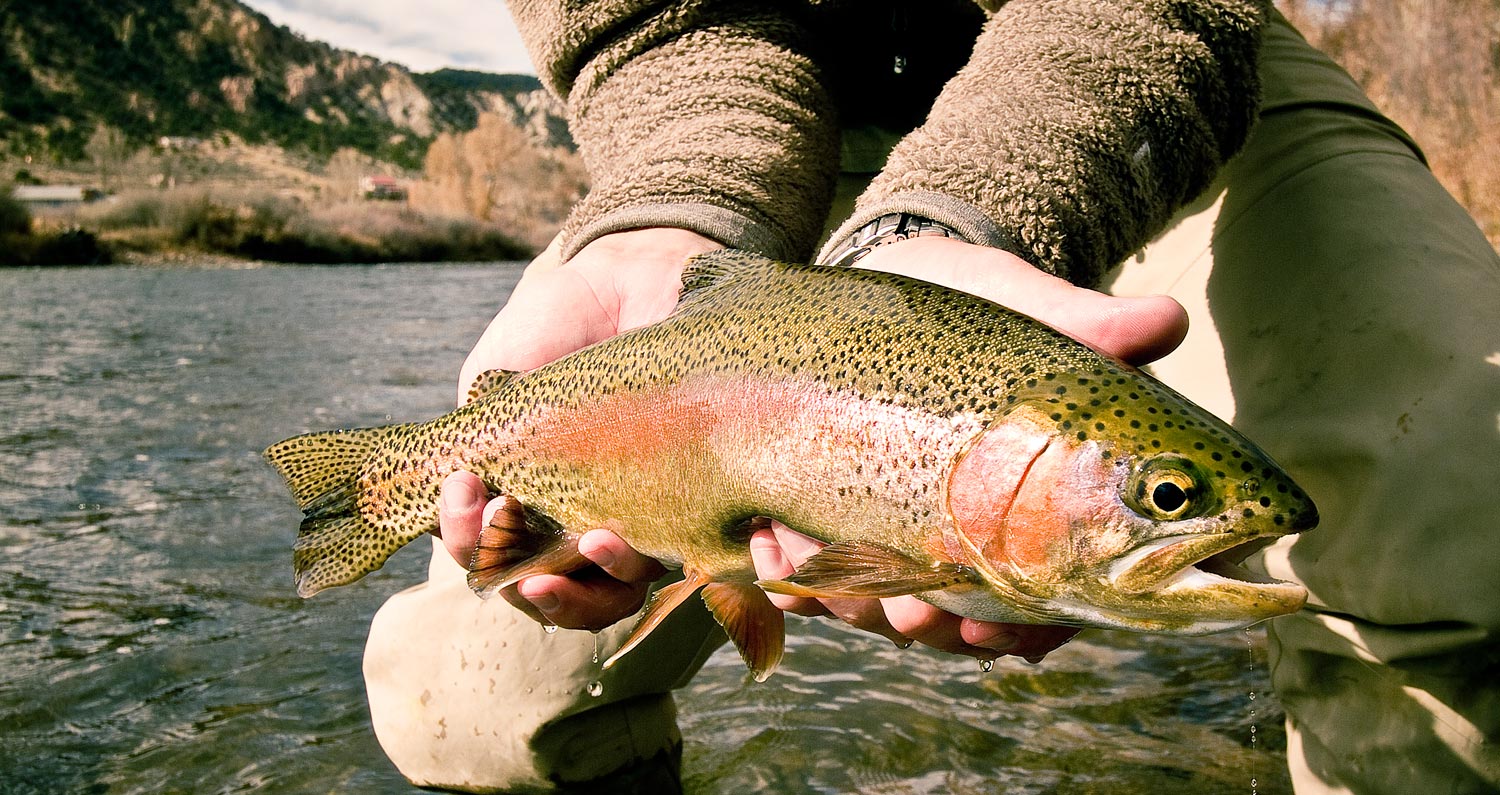
By Johnny Spillane
A QUICK RESPONSE TO LOUIS’S ARTICLE “TROUT ARE NOT SMARTER THAN PEOPLE, BUT THEY MAY BE SMARTER THAN ME.”
Trout have a brain that is smaller then a pea. No offense to Louis, but I’m positive that you can out-think a trout in a technical tailwater situation.
HERE ARE FIVE TIPS TO HELP YOU CATCH INCREDIBLY “SMART” FISH.
1. Go light and go small.
Fish are creatures of their environment. If they see small bugs all the time then you have to fish accordingly. 7X tippet and size 24 or 26 bugs are what the fish are looking for. Go down in tippet size before you switch fly patterns.
2. Match the sky
If you are fishing with an indictor, go with something that matches the color of the sky. If it’s overcast, use gray yarn, if it’s clear use a small clear or white Thingamabobber or yarn. You can also use a Slinky indicator. They are deadly with picky fish.
3. Use stealthy weight
If you are using split shot, make sure they are not flashy at all. Anything painted in a moss green is better then silver lead.
Sooooo-ee!!! Calling All Pellet Pigs: What You Should Know About Feeding Trout
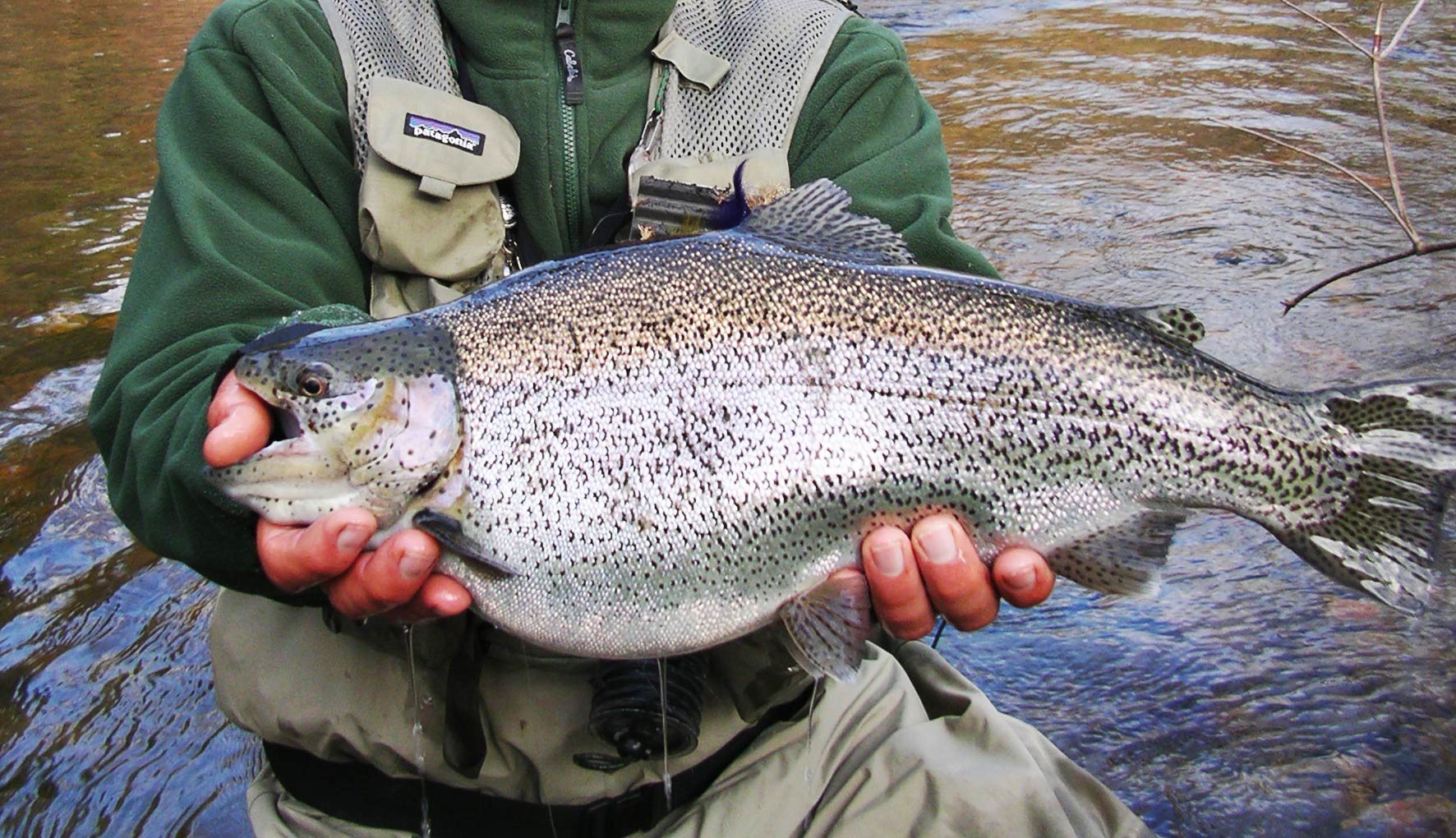
THE OTHER DAY ONE OF OUR READERS WAS OFFENDED WHEN I USED THE TERM “PELLET PIG”. I ENJOY OFFENDING PEOPLE, SO I DECIDED TO WRITE AN ENTIRE POST ON THE SUBJECT.
I honestly didn’t know we weren’t supposed to talk about this. Pellet pigs are a fact of life. They exist and people catch them. They are not offended that we call them pigs, because they don’t speak English. They can be a TON of fun. (get it) They can turn a marginal stream into a hog farm and they can seriously fuck things up.
Feeding fish on private water is a very common practice. I am not going to tell you that it’s ‘bullshit’ or it ‘doesn’t count’ or that it makes you a ‘pud whacker.’ I did it myself for a season and I have good friends who still do. I’ve had some great times catching pellet pigs and sharing the experience with friends. Through personal experience, I’ve learned the positives and the negatives.
Feeding fish, on private water, is a great way to insure that they hang around. Feeding will also attract wild fish from other parts of the stream to hold in your water. It’s a sure fire way to insure that you will always have good fishing, regardless of the quality of your water. It makes fish grow fast and generally means big fish will be present in unnaturally high numbers. This all sounds pretty good, right? Well, nothing in life is without cost and pellet pigs are no exception.
I’m not saying it’s always a bad idea to feed fish. You can do it right and you can do it wrong. What I am saying is,
IF YOU DECIDED TO FEED FISH, HERE ARE SOME THINGS YOU OUGHT TO KNOW.
1)Your trout is so fat it showed up at the Macy’s parade wearing ropes!
2) Feeding fish takes natural selection off the table. This can negatively impact the entire ecosystem of a stream. It discourages predation and supplements trout which would otherwise end up food themselves. If the trout in question is capable of reproduction, they pass on inferior genetics. Feeding also encourages fish to to crowd into holding water in unnatural numbers, increasing the spread of disease. These hordes of fish put unnatural pressure on forage food and can virtually wipe out localized forage species like insects and crawfish, leaving the fish increasingly dependent on feeding.
3) Your trout is so fat it can’t hold in a run, it has to hold in a waddle!
4) Pigs get fat, hogs get slaughtered. Feeding fish in one section of a stream can negatively impact the overall population. Causing fish to congregate puts them at risk on many levels. In addition to spreading disease, large pods of fish attract predators like otters, herons and bait fishermen. When a large pod is wiped out, the fish which are lost might have populated several miles of stream. Spread out, they would have survived.
5) Your trout is so fat
Read More »Use Long Leaders for Flat Water
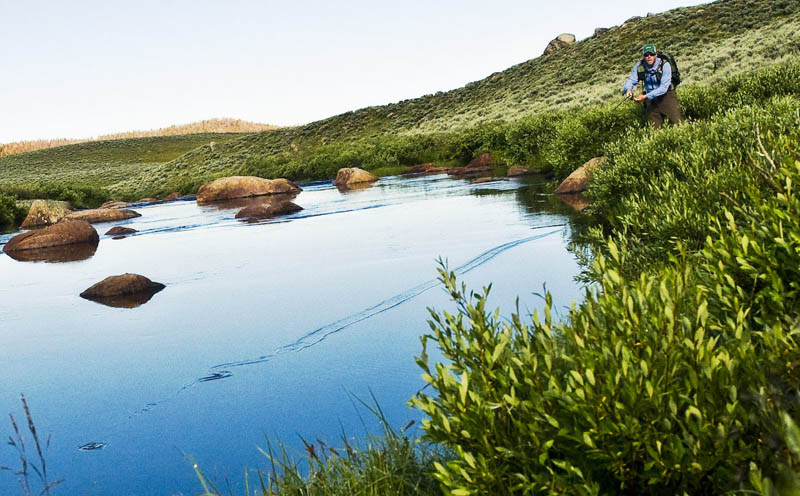
In the picture above, take a moment to view the disturbances the fly line and leader create on the water during a presentation.
The saying a picture tells a thousand words is true, particularly in this case, as a tool for me explaining how important it is to use a long leader when fly fishing on flat water.
Notice how little noise and footprint the leader makes when compared to the fly line. I was casting a Scott G2 5 weight rod with a 9′ leader and foam hopper, and I presented the fly as softly as possible. Anglers often don’t realize how much noise they’re creating during their presentations, and why so regularly they’re spooking the fish their casting to on flat water.
The fly line itself, creates the most noise during your presentation and is by far the biggest contributor to spooking fish. Try using a 10-12′ leader or even a specialty George Harvey dry fly leader, that’s designed to dissipate energy and lay out dry flies with slack. This will increase the distance between your fly and the start of your noisy fly line hitting the water, resulting in more hook ups and less spooks.
Read More »